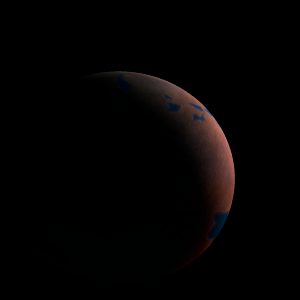|
|
Space Astro
|
Info for exoplanet "Bosnar Io"
| Scientific (actual) data |
|---|
| Name | Kepler-998 b |
| Planet status | Confirmed |
| Radius | 0.207 |
| Orbital period | 5.65378 |
| Discovered | 2016 |
| Updated | 2021-02-05 |
| Tconj | 2454960 |
| Publication | Announced on a website |
| Detection type | Primary Transit |
| Alternate names | 2MASS J19470099+4912314 b, K01885.01, KIC 11413812 b, KOI-1885 b, KOI-1885.01, WISE J194700.99+491231.3 b |
| Star name | Kepler-998 |
| Right ascension | 296.75° |
| Declination | 49.21° |
| Mag j | 13.229 |
| Mag h | 12.943 |
| Mag k | 12.888 |
| Star distance | 996 |
| Star metallicity | 0.07 |
| Star mass | 1.12 |
| Star radius | 1.18 |
| Star age | 3.31 |
| Star temperature | 6058 |
| Star alternate names | 2MASS J19470099+4912314, KIC 11413812, KOI-1885, WISE J194700.99+491231.3 |
| Wikipedia article | Kepler-998 b |
Back
| |
| Fictional info (?) |
|---|
| Suggested name | Bosnar Io |
| Planet type | Cold planet |
| It may have had carbonyl sulfide oceans in the past, but these would have vaporized as the temperature rose due to a runaway greenhouse effect.
A prominent result is the "great brown spot", a giant storm that is known to have existed for centuries since it was first detected by scanner. |
| Atmosphere | Hydrogen chloride | 96% |
| Krypton | 3.7% |
| Carbonyl sulfide | 0.045% |
| Ammonia | 0.025% |
| Argon | 0.0078% |
| Atmospheric pressure | 1.3 bar |
 |
| Moon | Xithone Mne | Very small almost round ice planetoid |
| Geteidi-eu | Huge round oceanic comet |
| Chal'da | Large round oceanic asteroid |
| Maae | Small slightly egg-shaped gaseous asteroid |
| Pinakin-ano | Large round rocky comet |
| Jullirr | Small irregular rocky planetoid |
| Google search for Bosnar io |
|
Website by Joachim Michaelis
|
|
|
|